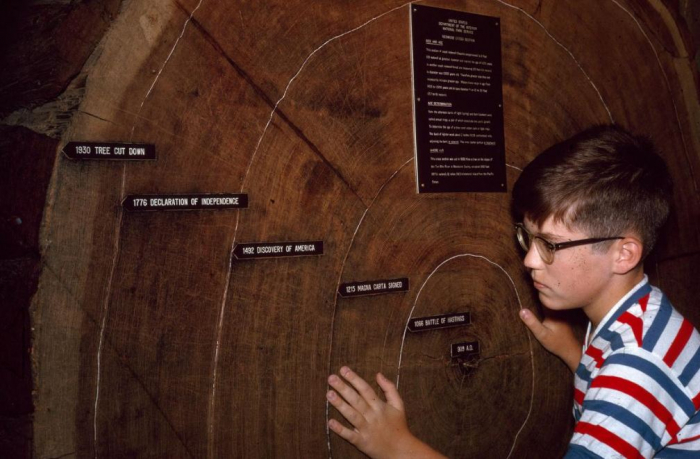Archaeologists have a group of unlikely allies: trees. Dendrochronology, the scientific method of studying tree rings, can pinpoint the age of archaeological sites using information stored inside old wood. Originally developed for climate science, the method is now an invaluable tool for archaeologists, who can track up to 13,000 years of history using tree ring chronologies for over 4,000 sites on six continents.
Trees don’t grow their trunk uniformly; though they add a new ring each growing season, trunk growth is closely linked to climate conditions. Under ideal conditions, trees grow quickly, leaving wide annual rings behind. During droughts, unseasonable cold, and other unusual conditions, growth slows, leaving behind narrow rings.
In the early 20th century, astronomer Andrew Ellicott Douglass began studying trees in the American Southwest to learn more about how sunspots affected climate on Earth. When he realized that the rings of trees in the same area all had the same patterns, he decided to use them as a record of the area’s historical climate.

Douglass eventually extended his work from living trees to wood used in ancient pueblo sites and began using them to piece together a regional chronology that could be used to date such archaeological sites. His research, which was partially funded by the National Geographic Society, helped push back the previously suspected dates for pueblos and changed the way archaeologists saw excavation sites. (Learn the other techniques archaeologists use to date sites and artifacts.)
Today, dendochronology is a critical tool for helping date archaeological sites and artifacts. The term was derived from the ancient Greek words for tree (dendron) and time (khronos).
When archaeologists recover timbers during excavations, they either cut full cross-section or retrieve cross-section cores, then compare them to regional chronologies to find matching ring patterns and determine a site’s age. Differing ages in specimens can reveal waves of construction at a particular site, or reveal migration and trade patterns with pieces of wood that were not cut locally.
Dendrochronology is more useful in some areas than others. In the tropics, for example, trees do not show distinct seasonal patterns, which makes tropical dendrochronology challenging. Wood must be well preserved to study effectively. And ancient people didn’t necessarily build with wood, depriving archaeologists of a critical tool for studying them.
Nonetheless, the tool is used across disciplines like climatology and art history, and tree ring chronologies are even used to calibrate radiocarbon dating measurements. Laboratories like the University of Arizona’s Laboratory of Tree-Ring Research train researchers and conduct ongoing research.
As tree ring data piles up, researchers have realized how valuable it can be. Tree ring patterns have recently been proven to match up with historical drought records and have revealed everything from changing indigenous forest management in the Central Amazon to the climate patterns that caused ancient Rome to rise and fall. Because of its cross-disciplinary use, dendrochronology has strengthened links between disciplines—and proven how valuable trees can be to archaeologists in search of more information about the sites they study.
National Geographic
More about: Dendrochronology Archaeologists
















































